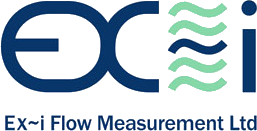Enhanced Oil Recovery (EOR), also known as tertiary production, can be expensive but can also significantly increase the yield of an oil field. Secondary methods of extraction, such as water and gas injection could leave 75% of oil in the ground. Therefore, successful strategies in this tertiary stage of oil recovery could be profitable if the right techniques and technology are applied.
Then, in this final stage of the life of the oil field, there must be a consideration of remediation strategies. Removing contaminants from the groundwater and the soil is a responsibility that should be taken seriously. This is not just because of regulation, but because of the potential ecological risks associated with unsuccessful remediation. If you undertake EOR methods, then these risks increase.
EOR strategies and remediation
The dual aim of successful EOR strategies is the optimisation of production while minimising the risk that is often associated with enhanced recovery methods. Therefore, to improve EOR is a matter of selecting the correct approach for your system and then supporting this with the appropriate remediation method.
Thermal
You can maximise production through thermal EOR. This introduces heat to the reservoir to reduce the viscosity of the oil. By thinning the oil, you allow it to flow more freely and therefore retrieve more. However, there are potential issues for corrosion. By introducing chemicals to address these issues, you can assure the flow and maximise the resources in the field.
Chemical injection
Introducing long-chain molecules, or polymers, into the reservoir increases the efficiency of waterflooding. This process helps to free trapped oil within the reservoir. It also increases the efficiency of the cleansers that help reduce tension and increase the flow of the oil. This method is currently used by only a few companies, as it can cause production problems. It can cause problems such as difficult scales and can make oil/ water emulsions more severe. Remediation methods are possible, with the right processes and chemicals, though the cost-benefit analysis is less promising.
Gas injection
As a tertiary method of oil recovery, this method involves injecting nitrogen or CO2 into the reservoir. The gases expand and push through the reservoir, decreasing viscosity and increasing flow. This method is gaining the most traction in the sector, as CO2 bi-products from other industrial processes can be used.
However, CO2 floods create production difficulties. The result can be severe corrosion and deposit formation, which can rapidly cause production to shut down. Therefore, to mediate these challenges, organic-deposit remediation and inhibition work needs to be undertaken. You also need specialists in remediation to work on mineral-scale control, even with the most challenging silicates.
The potential impact of EOR
Although there is significant ecological and production risk involved in EOR strategies, work in the US has proven that appropriate technologies can drive up output. Many see the non-reliance on foreign oil in the US as a consequence of EOR strategies. If all oil under the surface of the US could be retrieved through improved EOR and remediation, it would be ranked fifth in the world for the size of its reserves.
Ex~i Flow Measurement specialises in products for the gas and liquid measurement industry – manufacturing, researching and developing with a focus on continuous project development and enhancement. To speak to us about how we can help you, call +44 (0)1243 554920 or contact us here.
